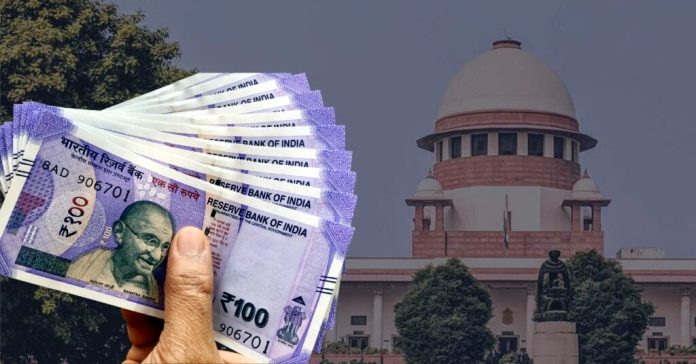By K Raveendran
The Supreme Court’s recent judgments granting bail to Delhi minister Manish Sisodia and others in the Delhi excise and similar cases mark a significant shift in how the judiciary approaches money laundering charges, particularly those pressed by the Enforcement Directorate (ED). The rulings not only highlight the evolving judicial perspective but also shed light on the court’s broader stance regarding the principles of bail and detention.
Sisodia’s case has garnered immense attention due to his high-profile nature and the gravity of the charges against him. The Supreme Court’s decision to grant bail has been described as a landmark moment in the court’s approach, reflecting a shift towards a more nuanced interpretation of bail conditions under the Prevention of Money Laundering Act (PMLA).
The approach becomes even more pivotal when considered alongside similar cases involving prominent political figures like K Kavitha, a leader of the Bharat Rashtra Samithi (BRS), and Prem Prakash, an aide to Jharkhand Chief Minister Hemant Soren. Both are facing money laundering charges, and their legal battles offer a comparative lens to understand the court’s evolving stance.
The Supreme Court’s verdict emphasizes a critical principle in criminal justice: bail should be the rule, not the exception. The principle aligns with the broader judicial philosophy that detention before trial should be used sparingly and only in exceptional circumstances. It underscores that the presumption of innocence should be respected, and bail should be granted unless there are compelling reasons to deny it.
In Sisodia’s case, the court examined the nature of the charges and the evidence presented by the ED and came to the conclusion that his prolonged detention amounted to a denial of his right to a speedy trial as the court noted there was not even a remotest possibility of trial being concluded in the future. It showed careful consideration of whether the presented evidence warranted continued detention. This is a departure from the more stringent approach previously adopted in cases under the PMLA, where detention was often prolonged based on the ED’s assertions of the severity of the charges.
The Supreme Court’s recent observations in PMLA cases provide further context for this ruling. Notably, the court has scrutinized the admissibility of confessions obtained during police custody. In a recent case, the court ruled that such confessions in one particular case could not be used as incriminating evidence in another case, reinforcing the importance of protecting the rights of the accused and ensuring that evidence is obtained through lawful means.
The recent verdicts align with a broader judicial trend towards ensuring that the legal process adheres to principles of fairness and due process. The court’s focus on the admissibility of confessions and the conditions for bail reflects a commitment to upholding these principles, even in complex and high-profile cases involving significant financial crimes. This is particularly important in the context of the agency doing mercenary political work for the ruling party.
The PMLA, enacted in 2002, was designed to combat money laundering and ensure that proceeds from criminal activities are curtailed. However, its stringent provisions have increasingly been criticized for their use against political adversaries. The law allows for the attachment of properties, arrest without bail, and long detentions, which can be wielded as a tool to harass and politically undermine individuals or groups.
In recent years, there have been multiple instances where the ED has targeted politicians from opposition parties or those in rival state governments. High-profile cases have involved leaders from various parties, and the timing of these actions often coincides with critical political moments or elections, leading to allegations that the ED is acting at the behest of the ruling party.
Despite the agency’s broad remit to investigate and prosecute money laundering, the conviction rate under the PMLA remains notably low. According to recent figures, out of the thousands of cases registered, the conviction rate is below 10 percent, suggesting a systemic challenge in securing convictions, which raises questions about the efficacy and impartiality of the investigative process.
The court’s reality check on such abuse is particularly significant and might signal a shift in approach. The Supreme Court had previously upheld the ED’s authority to arrest individuals without necessarily presenting detailed grounds for arrest in each case. New pronouncements, however, suggest a more nuanced application of these powers, emphasizing the need for a balanced approach that considers the specifics of each case.
The tension between these aspects of the court’s approach highlights the complexities of balancing the need to combat money laundering with the imperative to uphold fundamental legal principles. It also reflects an ongoing effort to reconcile these interests, ensuring that the legal process remains fair and just while addressing serious financial crimes. (IPA )


